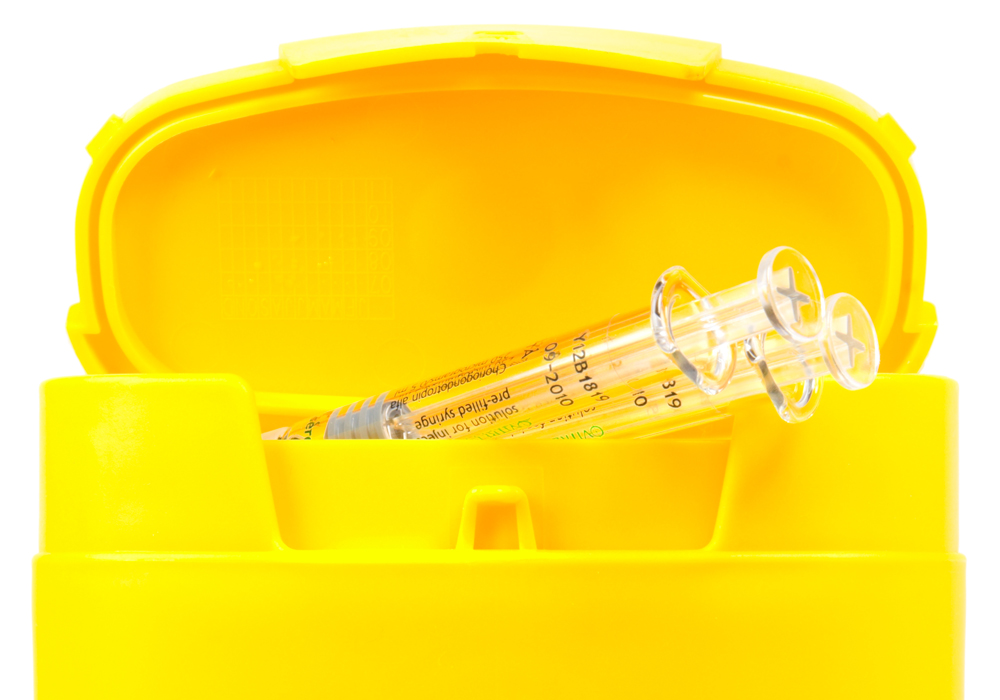Every day, used sharps and waste pharmaceuticals are generated in the home health care setting. Improper disposal of these items threatens human and environmental health. Accumulation and improper disposal of medications can lead to accidental poisonings of pets, children, and people with impaired mental abilities, as well as medication theft, drug diversion, and drug abuse. The National Institute on Drug Abuse reports that abuse of prescription drugs is second only to the abuse of marijuana among illicit drug users. Improper disposal of used sharps can lead to injury and infection to healthcare workers, sanitation workers, and others. Pertinent infections include hepatitis B and C, as well as human immunodeficiency virus (HIV).
Where should home care patients dispose of used insulin needles, used pain patches, and expired medications? The Food and Drug Administration (FDA) recommends disposal of medications in the home in the following manner:
- Medicine take back programs. This is the best option, although they may not accept controlled substances.
- Household trash disposal. Put the drug in a substance that renders the drug undesirable and then in a container such as in used coffee grounds sealed in a plastic bag. (Note: do not crush drugs.)
- Flushing down the sink or commode. Certain drugs, due to their extreme toxic nature, must be disposed of immediately. In that case, when a medicine take back option isn’t possible, the FDA recommends flushing down the sink or commode. Visit the FDA website at www.fda.gov/drugs/resourcesforyou for this specific list.
Several times during the year, the Drug Enforcement Administration (DEA) holds a National Prescription Drug Take-Back Day for the public to hand in unwanted medication. The next event will take place on Saturday, September 29, 2012, from 10:00 a.m. to 2:00 p.m. Check the DEA’s website for local collection sites. This successful initiative collects thousands of pounds of unwanted medication each year.
The Food and Drug Administration (FDA) recommends disposal of sharps in the home in the following manner:
- Put sharps in an FDA-cleared sharps disposal container with specific markings indicating when the container is full.
- Dispose of the container when sharps reach the specific mark indicating container is full.
- Dispose of the container following your community’s guidelines; visit the FDA website at www.fda.gov/MedicalDevices/ for detailed information.
To prevent sharps injuries in home care practice, have access to an FDA-cleared sharps disposal container, only use sharps equipped with safety devices, and observe universal precautions scrupulously. In the unlikely event that there is no sharps container available, do not manually recap. If no sharps container is available, the FDA recommends the use of a secure, rigid, puncture- and leak-proof container that can stand upright, such as a plastic laundry detergent container. Remember to properly label the container as well. This not only protects you, but also others in the home as well as sanitation workers.
For additional guidance on safe practices, ANA provides information and resources for needle stick prevention and injury at www.needlestick.org
Holly Carpenter is a senior staff specialist at ANA.



















1 Comment.
Disposing medications by flushing down the toilet contaminates our environment. What does EPA recommend? Thanks, Elaine.